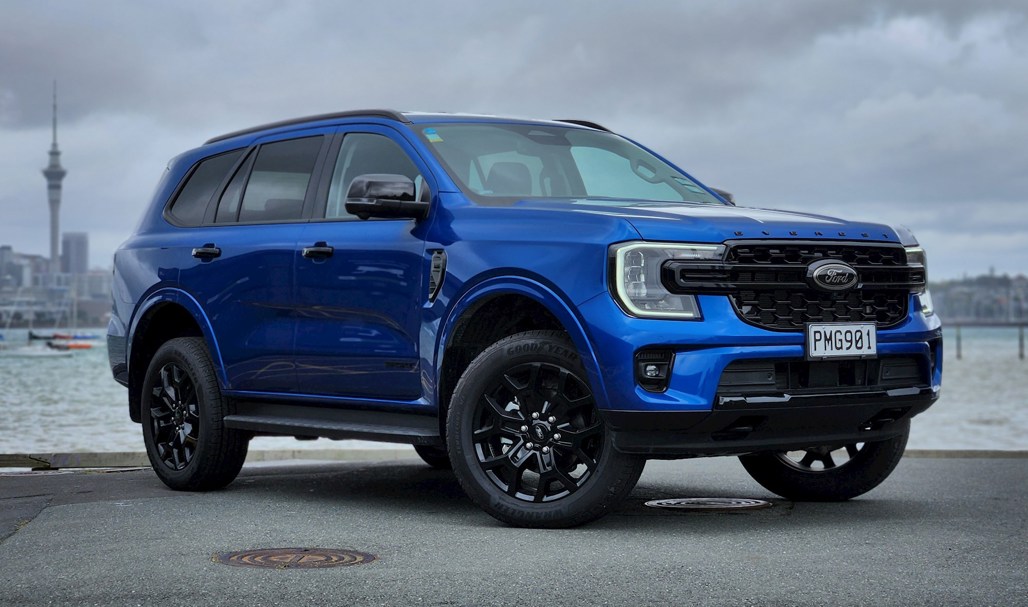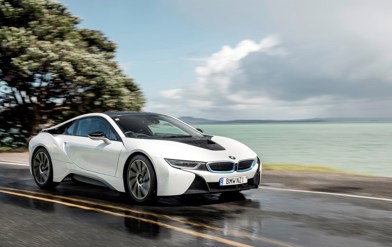Some things are pretty much inevitable. As sure as night follows day and indigestion follows a Wendy's Baconator, a Ford Everest SUV has followed the latest incarnation of the new Ranger ute.
While Ford will stress how completely and totally different the Everest is from the Ranger, it has always basically been a Ranger with different rear suspension and a shorter wagon body. And that is a situation that really hasn't changed with the new one, but that is a good thing, because the new Ranger is a rather excellent thing indeed.
As such, the new Everest is also a rather excellent thing and is at its best, in my opinion anyway, in V6 Sport guise that we have here.
As we already know, the 184kW/600Nm 3.0-litre diesel V6 engine is an absolute gem - on paper it is a bit more powerful than the excellent biturbo four-cylinder diesel (up 30kW, but also a more consequential 100Nm), but on the road its is light years ahead in terms of smoothness, drivability and refinement - while the Sport is something of a sweet spot in the Ranger line up.
And so it is in the Everest family as well, pairing back the bling of the Wildtrak (yes, you can buy an Everest Wildtrak now) with the slick blacked-out trim and body coloured wheel arches, the Sport looks the part without going over the top, while slipping that slick, smooth V6 under the bonnet is the icing on the cake.
Being an Everest, you are essentially trading the load carrying capability of the Ranger for people carrying abilities, with all models of Everest coming standard with seven seats in New Zealand.
The handy increase in size over the last model has made the third row far more accessible and roomy as well, while cargo space is a generous 898 litres with the third row folded down. It's still a handy 259 litres with them in place, while things get truly cavernous with both rows of rear seats dropped, with a total of 1823 litres available.
While the biturbo four is still an excellent engine, the broader muscularity of the V6 takes the Everest to the next level in terms of refinement, with the 10-speed auto being far less fussy and happy just to ride the big, broad torque curve. This makes the Sport V6 an effortless delight on the road, whether cruising or tacking something more twisty.
Which leads us nicely to handling - the Everest has an advantage over the Ranger by virtue of its more sophisticated rear suspension set up and the extra weight over that rear, giving it a far more predictable nature when you really start to hustle it along. Not that you necessarily will, however, as the Everest is a big boy now, and you are very aware of that sheer bulk when you start throwing it around with any enthusiasm.
While it handles itself very impressively indeed in this situation, it really is at its best when cruising along doing the family thing - hauling people, swallowing the shopping or towing a boat.
All of which it can do effortlessly and with less real-world fuel usage than the previous-generation's 3.2-litre inline 5-cylinder diesel.
While the 3.2 was officially rated at 8.9L/100km it rarely ever saw that in the real world, while the V6 comes in with an officially claimed combined figure of 9.7L/100kms, but its more relaxed abilities and fat torque curve mean doesn't need to try as hard as either the old five-cylinder or even the current 2.0-litre biturbo (which has a claimed combined average of 8.3L/100km) and can actually return figures under its official claim with little effort.
While the jump in quality and equipment over the last Everest is particularly noticeable on the inside, there are still a few niggles - wireless phone mirroring is one of the fastest pairing system I have every experienced, but it is somewhat flaky, often dropping the connection for no good reason, while the transmission selector is irritatingly easy to slip into the wrong place when going between reverse, park and drive, as it is annoyingly vague.
But these really are minor irritations, and the Everest Sport's thoroughly excellent engine, transmission and chassis - not to mention its comfort and good look - easily overcome whatever small annoyances they may bring.
FORD EVEREST SPORT
ENGINE: 3.0-litre turbo diesel V6
POWER: 184kW/600Nm
GEARBOX: 10-speed automatic, AWD with low-range transfer
CONSUMPTION: 9.7l/100km
PRICE: $81,490


















